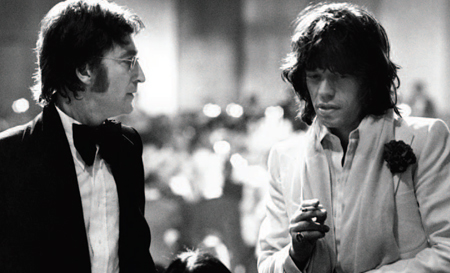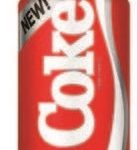A serious look at fish-out-of-water comedy.
By Luke Sacher
There is nothing remotely amusing about a fish-out-of-water experience. We’ve all been there at one time or another. Being in the wrong place at the wrong time, ill-equipped to cope with unfamiliar circumstances or unpredictable people, is at best deeply unsettling and, at worst, totally harrowing.
Unless, of course, it’s happening to someone else. In that case it’s hilarious.
My first boss out of college, a TV commercial director, advised me one day: “There are no small jobs, only small people.” I sardonically replied: “What about big jobs and big people? Or small jobs and big people? Or big jobs and small people?” He glared at me and said, “Okay, philosopher… now go pick up my dry cleaning.”
That small job led to bigger and better things, so his observation was sound and his point well made. Since then, I have adhered to my own version, which is when a window of opportunity opens, jump through it…just make sure you’re on the ground floor when you do. Needless to say, there is an entire genre of fish-out-of-water workplace comedy that runs counter to this kind of career advice. It’s the first of five I invite you to explore.
- The Patience of Job
In My Cousin Vinny (1992), Joe Pesci plays a street-smart personal injury attorney from New York City who finds himself in a Deep South courtroom defending his young cousin on what looks to be a slam-dunk murder charge. Vinny has three major problems: near total incompetence, absolutely no trial experience and a severe case of cultural tone deafness—which collectively earn him the contempt of the judge, played by Fred Gwynne. Vinny finally gets a grip on his situation when he begins listening to the movie’s other fish out of water, his girlfriend Mona, played to Oscar-winning perfection by Marisa Tomei.
In Spy (2015), Melissa McCarthy plays Susan Cooper, a dowdy, 40-something CIA desk analyst who is thrust into the role of field operative after super spy—and love of her life—Bradley Fine (Jude Law) is neutralized in a plot involving black market nuclear weapons. Imagine Moneypenny stepping in for James Bond. Or better yet, a ribald mix of Homeland, The Sum of All Fears, the Three Stooges and the Marx Brothers. Like Vinny, “Coop” finds a way to avert disaster and make us laugh while figuring out what separates an amateur from a pro.
Jerry Lewis, whom I knew and with whom I worked, starred in The Patsy (1964). When an A-List Hollywood pop and movie star perishes in a plane crash, his parasitic flunky managers, agents, producers and writers lose their meal ticket, and need to groom a replacement fast. Enter Stanley Belt, a bellboy at their hotel. The film has four unforgettable scenes: the singing lesson, the barber shop, the recording session, and Stanley lip-synching his hit song “I Lost My Heart in a Drive-In Movie” on an American Bandstand-style dance show. The final scene would do Fellini proud.
- Boys Will Be Girls
In the world of fish-out-of-water comedy, the best man for the moment is often a woman. After all, how hard can it be? Slap on some makeup, don a few glad rags, slip into a pair of heels, raise the pitch of your voice…and you’re good to go. What could possibly be the downside? Just don’t ask Michael Dorsey (aka Dorothy Michaels in Tootsie), Daniel Hilliard (aka Euphegenia Doubtfire) or Joe and Jerry (aka Jospehine and Daphne in Some Like It Hot).
In Tootsie (1982), Dustin Hoffman’s out-of-work actor finds fame and fortune disguised as a soap opera diva. The charade creates profound chaos in Dorsey’s personal life, but he learns valuable lessons about feminine empowerment and winds up a better man for it. In Mrs. Doubtfire (1993), Robin Williams masquerades as an over-the-top Scottish nanny in order to stay in the lives of his children after a messy divorce. It is difficult to imagine any actor other than Williams pulling off such a ludicrous character; in fact, Mrs. Doubtfire herself has a hard time keeping it together, both literally and figuratively.
Saving the best for last, Billy Wilder’s masterpiece Some Like it Hot (1958) features Tony Curtis and Jack Lemmon as a pair of jazz musicians who witness a Chicago mob rubout. They save their skins by joining an all-female orchestra (featuring Marilyn Monroe) headed for a winter gig in Miami. Once in Florida, Curtis’s character pursues Monroe by impersonating an heir to the Shell Oil fortune (employing a spot-on Cary Grant impersonation). Meanwhile, Lemmon’s Daphne is romanced—with a disturbing degree of success—by an actual millionaire, played by Joe E. Brown. It all works out in the end, sort of—I won’t spoil the ending for those who haven’t seen it yet.
For the record, pretty much every modern (post-Shakespeare) gender-bender comedy—from Victor/ Victoria (which is based on an early German film) to TV’s Bosom Buddies to Big Momma’s House—traces its origin to Charley’s Aunt, an 1892 British farce by Brandon Thomas, which has been adapted for the screen no less than 13 times and remains a staple of repertory theater.
- Out of Body Experiences
We’ve all had those odd moments when we don’t quite feel ourselves. But imagine finding yourself one fine morning transplanted into an entirely different body? That brings us to our third genre or fish-out-of-water comedies. The one we all grew up with was Freaky Friday, which features a petulant teenage daughter and her mom swapping bodies for 24 hours. Mary Rodgers’s award-winning 1972 children’s novel has been adapted and updated for stage, screen and TV five times—and has starred Jodie Foster & Barbara Harris (1976), Gaby Hoffman & Shelley Long (1995), and Lindsay Lohan & Jamie Lee Curtis (2003). One of the first—and best—was Goodbye Charlie (1964), the story of a Hollywood screenwriter and notorious lothario Charlie Sorrell. Charlie is murdered by the producer husband of one of his trysts…and comes back to life as “lotharia” Virginia Mason, played to the nines by Debbie Reynolds. Goodbye Charlie began as a Broadway play starring Lauren Bacall, in 1959. Switch, the 1991 Blake Edwards film starring Ellen Barkin, was essentially a remake.
One of the big hits of Spring 2019 was the out-of-body comedy Little, the story of a bullying executive who wakes up in her own 13-year-old body and must return to the school were she was originally bullied. As with Freaky Friday, a lot of the comic burden is shouldered by a young actor—in this case, Monai Martin, who is brilliant.Little also works because its title plays off the champion of out-of-body fish-out-of-water films, Big (1988), the Penny Marshall classic starring Tom Hanks. After a humiliating “too short to ride” experience at a traveling carnival, 13 year old Josh Baskin gets his wish to be “big” from a fortune telling machine, and wakes up as a 30 year old man, who must flee his own home after being mistaken by his mother as the kidnapper of her son. Josh’s childlike imagination and honesty brings him instant success, wealth and romance as a toy industry executive, but after a few weeks of grownup fun, he realizes that being big isn’t quite the picnic he thought it would be…and longs to be a kid again.
The movie’s iconic scene is Josh’s “chopsticks” duet with his boss (Robert Loggia) on the giant keyboard at FAO Schwarz. But perhaps the one that best depicts the essence of man-child humor is when Hanks shows up to an office party in a ridiculous rented tuxedo and gags on a “sophisticated” hors d’oeuvre. I detested caviar and quail eggs when I was 13, and still do. And no one’s going to make me eat them ever again because I’m big now.
- City Mouse, Country Mouse
The reversal of fortune, whether positive, negative or a mixed bag of both, is a time-honored device for putting characters in places they are ill-equipped to navigate. When those characters move from the city to the country, or vice-versa, we find that their strengths become weaknesses, their weaknesses become strengths and, of course, comedy ensues. One of the biggest hits on Netflix right now, in fact, is the Canadian sitcom Schitt’s Creek, which relocates ruined video-store tycoon Johnny Rose (Eugene Levy) and his formerly jet-setting family to the last piece of real estate he owns: a no-tell motel in a backwater town of the same name. Newhart (1982–90) found famed how-to author Dick Louden (Bob Newhart) running a moreupscale establishment in a picturesque Vermont town, but dealing with an even loopier cast of characters.
Although countless film comedies have featured reversals of fortune—Trading Places (1983) being perhaps the most successful—television, it turns out, is an especially welcoming medium for this fish-out-of-water genre, seeing as it allows for the quirkiness factor to develop over many seasons. One of the first shows to really get it right was Green Acres (1965–71), in the mid-60s. One day, attorney Oliver Wendell Douglas (Eddie Albert) looks out from his Manhattan penthouse, declares to his glamorous and eccentric wife Lisa (Eva Gabor) “I hate it!” and drags her unwillingly to a farm in Hooterville. There he is plagued by a parade of unforgettable idiots, including conniving junkman Mr. Haney, the childless Ziffels (who have raised their pig Arnold as a child), farming expert Hank Kimball (who can never finish a thought), and the brother-sister home renovation team of Alf and Ralph (who can never finish a home renovation). The underlying gag in the series is that everyone in Hooterville thinks Oliver is a dope—something he can never quite wrap his mind around.
Green Acres was the brainchild of CBS producer Paul Henning, who simply flipped the script of his earlier hit, The Beverly Hillbillies (1962–71). After Jed Clampett (Buddy Ebsen) accidentally strikes oil on his dirt patch in the Ozarks, he moves his family to California’s most exclusive address, a neighborhood of “swimming pools and movie stars.” They live next door to the Drysdales, an obsequious banker who will do anything to prevent the Clampetts from moving their deposit to a competitor, and his wife, who detests them. Though utterly lacking in guile and sophistication, Jed, Granny, Ellie Mae and Jethro end up outsmarting, outlasting or repulsing the endless stream of con-men and -women who arrive at their mansion hoping to separate them from their millions. Jethro (Max Baer Jr.) and Granny (Irene Ryan) do most of the comic heavy lifting in a series that was the #1 show on television twice and in the Top 20 eight years out of nine.
- You’re Not From Around Here
Imagine how much fun you’d have if you could shed the constrictions of time, space and the laws of physics. That kind of thinking produced classics classic tales such as Gulliver’s Travels, Alice in Wonderland, The Wizard of Oz and Rip Van Winkle. It has also engendered some of the funniest films and television series in history. Too many even to mention, in fact. From this idea came the inspiration for the hit sitcoms My Favorite Martian (1963–66), starring Ray Walston and Bill Bixby, and Mork & Mindy (1978–82), starring Robin Williams and Pam Dawber—as well as the Conehead family (Dan Aykroyd and Jane Curtin), who debuted in a 1977 SNL sketch. I should probably add to this list the 2000 Star Trek send-up, Galaxy Quest, where a group of hammy human actors find themselves beamed onto a real alien spaceship. The rule of thumb in each case was that casting, not costuming, is crucial to pull off a fish-out-of-water comedy about extraterrestrials.
That certainly accounts for the success of the NBC series 3rd Rock from the Sun (1996–2001), which starred John Lithgow, Kristen Johnston, French Stewart, Joseph Gordon-Levitt. They play a quartet of aliens living in a Cleveland suburb, tasked with observing the inhabitants of an insignificant planet called Earth. Not quite comfortable in their human skins and never blending in as well as they think, the characters rarely miss an opportunity to hold a slightly cracked mirror up to American culture. Actually, it was Gore Vidal who broke important comic ground in this category with Visit to a Small Planet, first written in 1956 for television, reworked as a Broadway show in 1958, and then as a 1960 feature film starring Jerry Lewis—worth watching just for the scene in the beatnik night club with Buddy Rich.
In addition to the extraterrestrials there are the “supernaturals,” whose extraordinary powers make them a tricky fit for civilized society. Among the funniest of these fish out of water comedies was Hancock (2008), the story of a destructive, alcoholic superhero played by Will Smith who needs a PR flack to burnish his image. The original comic supernaturals, of course, were America’s 1960s sweethearts, Elizabeth Montgomery and Barbara Eden, who played more familiar mythological characters: a witch and a genie.
Bewitched (1964–1972) and I Dream of Jeannie (1965–70) featured pretty much identical plots. A beautiful blonde witch meets and marries a mere mortal advertising executive and a beautiful blonde genie is found by a NASA astronaut whose capsule splashes down near a desert island. Ignoring the fantasies of virtually every mid-century male television viewer, both men feebly lay down the same ground rule…no hocus-pocus.
The similarities did not end there. Both shows used every state-of-the-art technical trick to push the envelope on the time-honored rules of visual comedy: Make something larger or smaller than it normally is, make something do what it normally doesn’t, put something where it normally isn’t. The genius of these shows is that Samantha Stephens and Jeannie were essentially the straight men, while Darren Stephens (especially the first one, Dick York) and Tony Nelson barely kept it together executing the big physical comedy. And then there were the supporting characters, some of whom were in on the joke and others who weren’t. You had to feel for poor Gladys Kravitz, who kept seeing inexplicable things next door, and whose husband Abner thinks that she’s been swallowing too much mouthwash. Or poor Dr. Bellows, the NASA psychiatrist, who is made to doubt his own sanity so often that he almost takes it in stride: “Major Nelson…it’s snowing. On your house. Only on your house. In Cocoa Beach. In the middle of July.”
Often at this point in a feature story, the writer begins a paragraph with “In conclusion…” I don’t think one can when discussing this topic. First of all, I could write an entire book (or shoot a two-hour documentary) about fish-out-of-water comedies and still barely scratch the surface. Second, and perhaps more important, doesn’t all comedy originate in one way or another from this construct? Think about the book or film or TV show or play that never fails to make you laugh…my guess is that the humor originates from a character finding himself or herself in an uncomfortable or unfamiliar place. A good writer knows when to stick to the basics—and how to grab an audience and activate its funny bone.
I’m more than a bit biased by my personal affection for fish-out-of-water humor, but to me, its sheer immensity demands an entire book or a two-hour documentary to be covered adequately. Here, after 2,500-plus words, I’ve just scratched the surface. Perhaps it’s best to end by asking What have we learned today? Something that I discovered researching and writing this article is that virtually all comedy originates, in one way or another, from a fish-out-of-water situation—dating back to ancient Greece.
Think about the book, film, TV show or play that never fails to make you laugh…my guess is that the humor originates from a character finding himself or herself in an uncomfortable or unfamiliar place and, against all odds, emerges both triumphant and a better person for the experience. Pakistani-American comedian and actor Kumail Nanjiani, a fish out of water himself, might have said it best when he observed that “being a fish out of water is tough…but that’s how you evolve.”
Extemporals
Transport wacky characters through time and you may strike fish-out-of-water gold. In Bill and Ted’s Excellent Adventure (1989), the fate of the future world hinges on the ability of two bone-headed Southern California teenagers—played by Alex Winter and Keanu Reeves—to complete a show-and-tell project for their World History class. With the help of George Carlin and a time-traveling telephone booth, they fetch Beethoven, Napoleon, Billy the Kid, Joan of Arc, Sigmund Freud, Abraham Lincoln and Socrates for a grand spectacle in the school auditorium.
Lost in America
Fish-out-of-water comedy works particularly well when characters find themselves out of their element, yet still close to home. In Lost In America (1985), Albert Brooks and Julie Hagerty play David and Linda, successful Los Angeles yuppies who respond to a sudden professional setback with a bold stroke of dementia: they cash out of their house and hit the road in a Winnebago to find themselves “like in Easy Rider.” Who could have predicted that, at a stop in Las Vegas, she turns out to be a degenerate gambler who loses their entire nest egg at the roulette wheel? Lost In America does a superb job of holding a mirror up to American society from top to bottom, as David and Linda suffer the endless indignities of a minimum-wage existence.
Out of Africa
Unless you are a Native American, chances are good that you are descended from someone who was the ultimate fish out of water: a stranger to North America. The actual U.S. immigrant story is not inherently funny (especially not these days)…unless of course, you decide to mine it for humor. Think about Crocodile Dundee or Moscow On the Hudson or Borat. The humor doesn’t come so much from the awkward struggles of the newcomer as it does from the Americans who are trying to make them feel welcome (or unwelcome). Perhaps the best example is Coming to America (1988). Eddie Murphy stars as Akeem, an over-pampered African prince who leaves his homeland of Zamuda and arrives in outer-borough New York, where he and his best friend Semmi (Aresneio Hall) must rough it while Akeem searches for a suitable wife. “What better place to find a queen than the city of Queens?” The logic turns out to be unassailable.
















 is able to catch them live, not in a studio set up, has a real gift.” He is sharing that gift in Shooting Stars, a collection of untold stories and rarely seen candid photos of entertainment and society icons. Sued by Jackie Onassis (another all-time favorite) and socked in the jaw by Marlon Brando, Galella has many a tale to tell—from his early life in the Bronx to his remarkable red carpet adventures.
is able to catch them live, not in a studio set up, has a real gift.” He is sharing that gift in Shooting Stars, a collection of untold stories and rarely seen candid photos of entertainment and society icons. Sued by Jackie Onassis (another all-time favorite) and socked in the jaw by Marlon Brando, Galella has many a tale to tell—from his early life in the Bronx to his remarkable red carpet adventures.





















 EDGE: Is there an entertainer you look at now and think, Yeah, she did it the right way—not an idol so much as an inspiration?
EDGE: Is there an entertainer you look at now and think, Yeah, she did it the right way—not an idol so much as an inspiration?
 Unmasked is a new musical revue inspired by the recent autobiography of Andrew Lloyd Webber and featuring his most beloved songs and stories.
Unmasked is a new musical revue inspired by the recent autobiography of Andrew Lloyd Webber and featuring his most beloved songs and stories. 


 Saturday • March 21 • 7:30 pm
Saturday • March 21 • 7:30 pm 















 February 27 – March 1
February 27 – March 1 














 OLESTRA • 1996
OLESTRA • 1996  Fast-forward to 1987, by which time the company had amassed enough long-term data to submit an application to the FDA for Olestra. Nine years later, in 1996, the FDA approved its use in the manufacture of potato chips, tortilla chips, and crackers—under the condition that a health warning label is printed on every bag, reading “This Product Contains Olestra. Olestra may cause abdominal cramping and loose stools (anal leakage). Olestra inhibits the absorption of some vitamins and other nutrients. Vitamins A, D, E and K have been added.”
Fast-forward to 1987, by which time the company had amassed enough long-term data to submit an application to the FDA for Olestra. Nine years later, in 1996, the FDA approved its use in the manufacture of potato chips, tortilla chips, and crackers—under the condition that a health warning label is printed on every bag, reading “This Product Contains Olestra. Olestra may cause abdominal cramping and loose stools (anal leakage). Olestra inhibits the absorption of some vitamins and other nutrients. Vitamins A, D, E and K have been added.”  NEW COKE • 1985
NEW COKE • 1985








 what they want to be when they grow up. Lady Gaga? Batman? A paleontologist? As a young boy, Werner Carl Burger declared that he wanted to be an Abstract Expressionist. The German-born painter never wavered from achieving his dream, no matter what the waking world had in store.
what they want to be when they grow up. Lady Gaga? Batman? A paleontologist? As a young boy, Werner Carl Burger declared that he wanted to be an Abstract Expressionist. The German-born painter never wavered from achieving his dream, no matter what the waking world had in store.

















 Room for Improvement: 2020 Edition
Room for Improvement: 2020 Edition If you’re renting a car…THAT is the question.
If you’re renting a car…THAT is the question.


